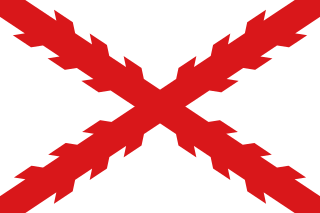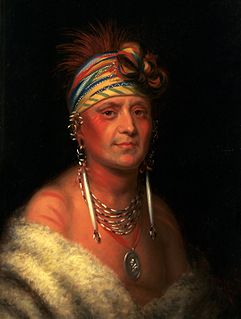 W
WÉtienne de Veniard, Sieur de Bourgmont was a French explorer who documented his travels on the Missouri and Platte rivers in North America and made the first European maps of these areas in the early 18th century. He wrote two accounts of his travels, which included descriptions of the Native American tribes he encountered. In 1723, he established Fort Orleans, the first European fort on the Missouri River, near the mouth of the Grand River and present-day Brunswick, Missouri. In 1724, he led an expedition to the Great Plains of Kansas to establish trading relations with the Padouca.
 W
WCoronado Heights is a hill northwest of Lindsborg, Kansas, United States. It is alleged to be near the place where Francisco Vásquez de Coronado gave up his search for the seven cities of gold and turned around to return to Mexico. Coronado Heights is one of a chain of seven sandstone bluffs in the Dakota Formation and rises approximately 300 feet.
 W
WFort Leavenworth is a United States Army installation located in Leavenworth County, Kansas, in the city of Leavenworth, roughly 20 miles northwest of Kansas City. Built in 1827, it is the second oldest active United States Army post west of Washington, D.C., and the oldest permanent settlement in Kansas. Fort Leavenworth has been historically known as the "Intellectual Center of the Army."
 W
WThe term Great American Desert was used in the 19th century to describe the western part of the Great Plains east of the Rocky Mountains in North America to about the 100th meridian. It can be traced to the 1820 Stephen H. Long's scientific expedition which put the Great American Desert on the map.
 W
WHenry Leavenworth was an American soldier active in the War of 1812 and early military expeditions against the Plains Indians. He established Fort Leavenworth in Kansas, and named after him is the city of Leavenworth, Kansas, Leavenworth County, Kansas, and the Leavenworth Penitentiary.
 W
WSpanish Louisiana was a governorate and administrative district of the Viceroyalty of New Spain from 1762 to 1801 that consisted of a vast territory in the center of North America encompassing the western basin of the Mississippi River plus New Orleans. The area had originally been claimed and controlled by France, which had named it La Louisiane in honor of King Louis XIV in 1682. Spain secretly acquired the territory from France near the end of the Seven Years' War by the terms of the Treaty of Fontainebleau (1762). The actual transfer of authority was a slow process, and after Spain finally attempted to fully replace French authorities in New Orleans in 1767, French residents staged an uprising which the new Spanish colonial governor did not suppress until 1769. Spain also took possession of the trading post of St. Louis and all of Upper Louisiana in the late 1760s, though there was little Spanish presence in the wide expanses of the "Illinois Country".
 W
WThe Louisiana Purchase was the acquisition of the territory of Louisiana by the United States from France in 1803. In return for fifteen million dollars, or approximately eighteen dollars per square mile, the United States nominally acquired a total of 828,000 sq mi. However, France only controlled a small fraction of this area, with most of it inhabited by American Indians; for the majority of the area, what the United States bought was the "preemptive" right to obtain Indian lands by treaty or by conquest, to the exclusion of other colonial powers. The total cost of all subsequent treaties and financial settlements over the land has been estimated to be around 2.6 billion dollars.
 W
WThe Territory of Louisiana or Louisiana Territory was an organized incorporated territory of the United States that existed from July 4, 1805, until June 4, 1812, when it was renamed the Missouri Territory. The territory was formed out of the District of Louisiana, which consisted of the portion of the Louisiana Purchase north of the 33rd parallel.
 W
WThe Territory of Missouri was an organized incorporated territory of the United States that existed from June 4, 1812 until August 10, 1821. In 1819, the Territory of Arkansas was created from a portion of its southern area. In 1821, a southeastern portion of the territory was admitted to the Union as the State of Missouri, and the rest became unorganized territory for several years.
 W
WThe New England Emigrant Aid Company was a transportation company founded in Boston, Massachusetts by activist Eli Thayer in the wake of the Kansas–Nebraska Act, which allowed the population of Kansas Territory to choose whether slavery would be legal. The Company's ultimate purpose was to transport anti-slavery immigrants into the Kansas Territory. The Company believed that if enough anti-slavery immigrants settled en masse in the newly-opened territory, they would be able to shift the balance of political power in the territory, which in turn would lead to Kansas becoming a free state when it eventually joined the United States. The New England Emigrant Aid Company is noted less for its direct impact than for the psychological impact it had on pro-slavery and anti-slavery elements. Thayer's prediction that the Company would eventually be able to send 20,000 immigrants a year never came to fruition, but it spurred Border Ruffians from nearby Missouri, where slavery was legal, to move to Kansas to ensure its admission to the Union as a slave state. That, in turn, further galvanized Free-Staters and enemies of Slave Power.
 W
WJuan de Oñate y Salazar was a Spanish conquistador from New Spain, explorer, and colonial governor of the province of Santa Fe de Nuevo México in the viceroyalty of New Spain. He led early Spanish expeditions to the Great Plains and Lower Colorado River Valley, encountering numerous indigenous tribes in their homelands there. Oñate founded settlements in the province, now in the Southwestern United States. A monument in Alcalde, New Mexico was removed on June 15, 2020.
 W
WPawnee is a ghost town in Geary County, Kansas, United States, which briefly served as the first official capital of the Kansas Territory in 1855. Pawnee was the territorial capital for exactly five days – the legislature met there from July 2 to July 6 – before legislators voted to move the capital to Shawnee Mission, which is located in present-day Fairway. It may be the shortest-lived capital of any U.S. state or territory.
 W
WSanta Fe de Nuevo México was a Kingdom of the Spanish Empire and New Spain, and later a territory of independent Mexico. The first capital was San Juan de los Caballeros from 1598 until 1610, and from 1610 onward the capital was La Villa Real de la Santa Fe de San Francisco de Asís. The name "New Mexico", the capital in Santa Fe, the government building, militia or citizen-soldiers (vecinos), and rule of law were retained when the New Mexico Territory, later the U.S. State of New Mexico, became a part of the United States. The New Mexican citizenry, primarily consisting of Hispano, Pueblo, Navajo, Apache, and Comanche peoples, became citizens of the United States as a result of the Treaty of Guadalupe Hidalgo.
 W
WThe Second Dragoon Expedition of 1835 left Fort Leavenworth, unorganized territory May 29, 1835, charged with contacting the Indian tribes across the Central Plains to the Rockies as far west as the Mexican border. Traveling first up the Platte River they made contact with the Otoe, Omaha, Grand Pawnee, and Arickaree tribes. Continuing south along the front range of the Rockies, they reached Bent's Fort on August 6. At Bent's Fort the expedition held councils with the Arapahoes, Cheyennes, Black Feet, Gros Ventres, and others. On August 12, 1835 the Dragoons began the return march from Bent's Fort, following the Santa Fe Trail eastward. They arrived at Council Grove, Kansas the evening of September 8, 1835. Between Council Grove and Hundred and Ten Mile Creek the expedition experienced its only loss, the death of 23 year old, Private Samuel Hunt on September 11, 1835. In Colonel Dodge's Journal he wrote, "On the 11th a man of company “A” died—the first death that has occurred on our whole march, and the only severe sickness. The colonel directed him to be buried on a high prairie ridge, and a stone placed at the head of the grave, with his name and regiment engraved thereon. Continued the march; crossed the Hundred-and ten-mile creek, and entered upon the dividing ridge between the Kansas and Osage rivers; passed Round and Elm Groves, and arrived at the crossing of the Kansas, at Dunlap's Ferry, on the 15th; crossed the river, and on the 16th arrived at Fort Leavenworth."
 W
WShawnee Methodist Mission was established by missionaries in 1830 in Turner, Kansas to minister to the Shawnee tribe of Native Americans who had been removed to Kansas. In 1839 the mission relocated to Fairway, where it built a brick building referred to by names varying from Shawnee Indian Methodist Manual Labor School. It was one of the first such missions established in the territory acquired by the United States in the Louisiana Purchase. Designated as a National Historic Landmark in 1968, the Shawnee Methodist Mission is operated today as a museum. The site is administered by the Kansas Historical Society as the Shawnee Indian Mission State Historic Site.
 W
WFrancisco Vázquez de Coronado y Luján was a Spanish conquistador and explorer who led a large expedition from what is now Mexico to present-day Kansas through parts of the southwestern United States between 1540 and 1542. Vázquez de Coronado had hoped to reach the Cities of Cíbola, often referred to now as the mythical Seven Cities of Gold, which is a term not invented until American gold-rush days in the 1800s. His expedition marked the first European sightings of the Grand Canyon and the Colorado River, among other landmarks. His name is often Anglicized as "Vasquez de Coronado" or just "Coronado".
 W
WThe Villasur expedition of 1720 was a Spanish military expedition intended to check New France's growing influence on the North American Great Plains, led by Lieutenant-General Pedro de Villasur. Pawnee and Otoe Indians attacked the expedition in Nebraska, killing 36 of the 40 Spaniards, 10 of their Indian allies, and a French guide. The survivors retreated to their base in New Mexico.
 W
WWhite Plume, also known as Nom-pa-wa-rah, Manshenscaw, and Monchousia, was a chief of the Kaw Indians. He signed a treaty in 1825 ceding millions of acres of Kaw land to the United States. Most present-day members of the Kaw Nation of Oklahoma trace their lineage back to him. He was the great-great-grandfather of Charles Curtis, 31st Vice President of the United States.